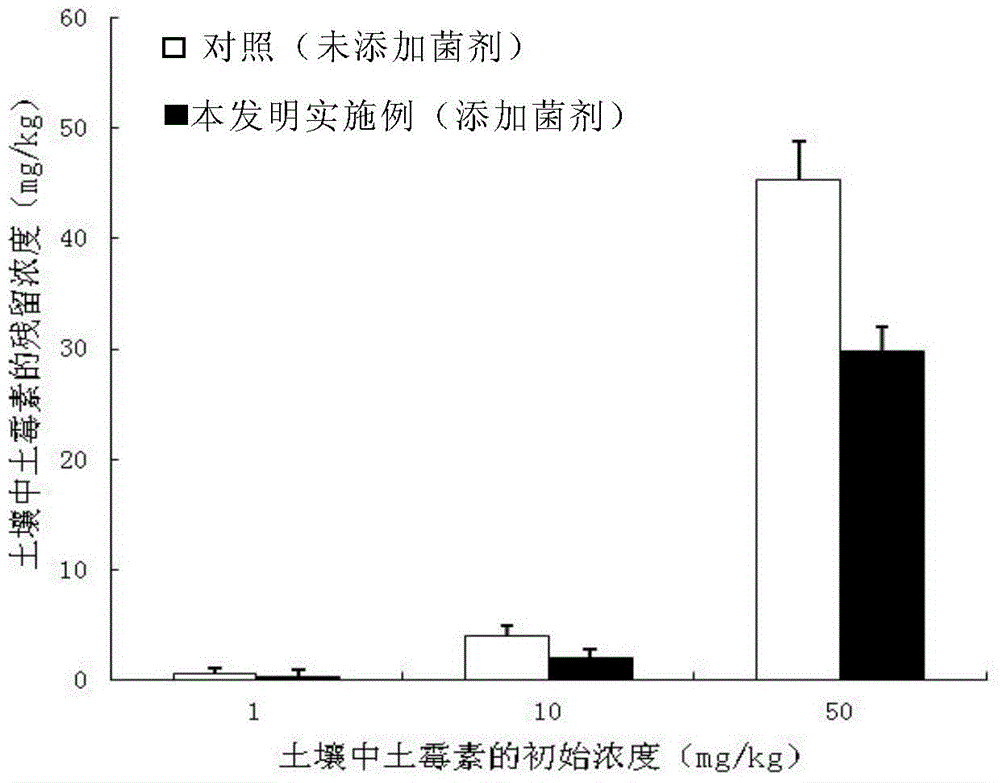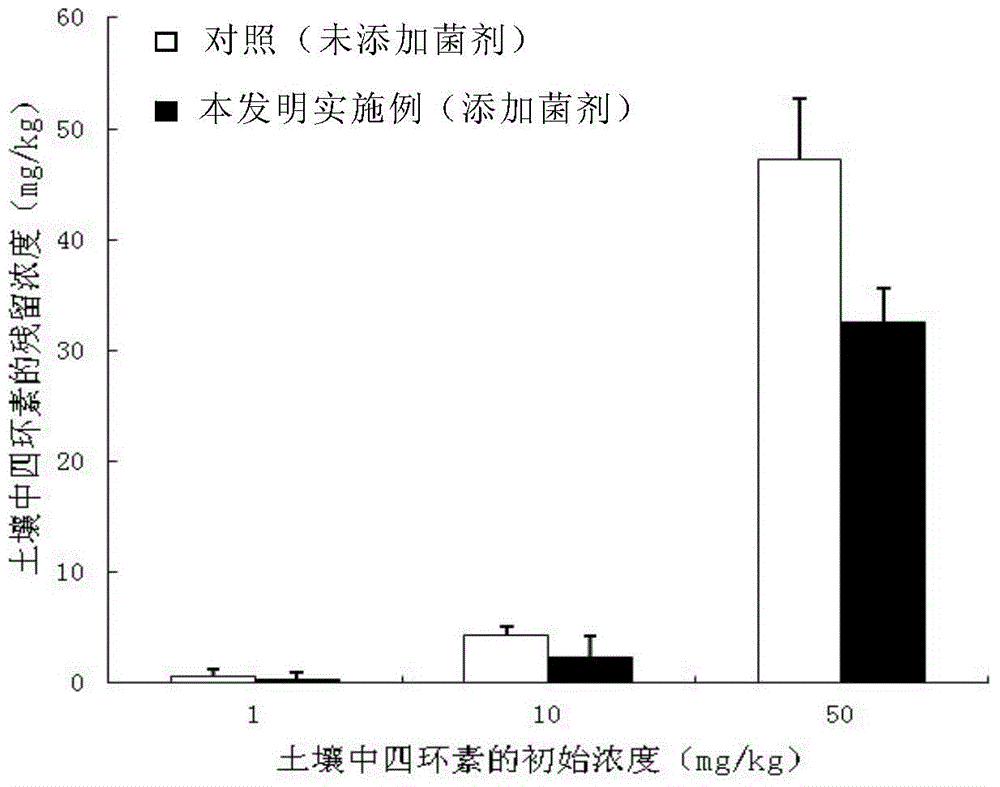Mycorrhizal fungi inoculant and application of mycorrhizal fungi inoculant in degradation of residual tetracycline antibiotics
A technology of mycorrhizal fungi and tetracyclines, applied in the field of contaminated soil remediation, to achieve the effects of increasing the contact area, simple operation, and reducing residues
- Summary
- Abstract
- Description
- Claims
- Application Information
AI Technical Summary
Problems solved by technology
Method used
Image
Examples
Embodiment 1
[0029] The preparation of embodiment 1 mycorrhizal fungus inoculum
[0030] The arbuscular mycorrhizal agent used in the present invention is that the mycorrhizal fungal agent is obtained by multiplying the bacterial species inoculant in the greenhouse, wherein the bacterial species inoculant (Glomus lanus (XJ03C), Moses Glomus (NM03D) and Glomus contortus (NM03A)) were purchased from the "China Arbuscular Mycorrhizal Fungi Germplasm Resource Bank", and the specific preparation method of the bacterial agent is as follows:
[0031] The multiplication culture is carried out in the greenhouse. The conditions in the greenhouse are: carried out in a growth room with controlled environment, with about 16 hours of daytime light and a temperature of about 25°C, and about 8 hours of nighttime light with a temperature of about 18°C. Osram fluorescent lamps are used for both day and night Lighting, the light intensity is 550μEm -2 the s -1 about. Put the sterilized culture medium (zeo...
Embodiment 2
[0032] Example 2 Degradation effect experiment of Glomus tertiotomycin with different initial concentrations of oxytetracycline in oxytetracycline-contaminated soil
[0033] The initial content of oxytetracycline is 1.0kg of oxytetracycline-contaminated soil of 1mg / kg, 10mg / kg, 50mg / kg and is respectively packed in different flower pots, and is mixed into the young capsular mycotic agent 30g that embodiment 1 prepares respectively At the same time, a control treatment without inoculation of any bacterial agent is set, three parallel samples are set for each treatment in the four treatment modes, the soil water content is adjusted to be 60% of the maximum field water holding capacity, and the soil is left to stand overnight, and the alfalfa or corn seeds are treated with 10wt %H 2 o 2After disinfection and germination, sow in the soil that has been inoculated with young capsule fungal agent. Sow 3 seeds per pot of corn, 9 seeds per pot of alfalfa, and sow them in different pot...
Embodiment 3
[0035] Example 3 Degradation effect experiment of Glomus mosei on different initial concentrations of oxytetracycline in oxytetracycline-contaminated soil
[0036] The oxytetracycline contaminated soil 1.0kg that the oxytetracycline initial content is 1mg / kg, 10mg / kg, 50mg / kg is packed in different flower pots respectively, and mixes respectively the Moxi balloon mold agent 30g that embodiment 1 prepares, Set up the control treatment that does not inoculate any bacterial agent at the same time, set 3 parallel samples for each treatment in four kinds of treatment modes, adjust soil water content to be 60% of maximum field water holding capacity, stand overnight, alfalfa or corn seed with 10wt% h 2 o 2 After disinfection and germination, sow the seeds in the soil that has been inoculated with the moxie glomus fungal agent. Sow 3 seeds per pot of corn and 9 seeds per pot of alfalfa. 1 corn, 7 alfalfa. Then manage according to the management mode of common crops, and after 90 d...
PUM
 Login to View More
Login to View More Abstract
Description
Claims
Application Information
 Login to View More
Login to View More - R&D
- Intellectual Property
- Life Sciences
- Materials
- Tech Scout
- Unparalleled Data Quality
- Higher Quality Content
- 60% Fewer Hallucinations
Browse by: Latest US Patents, China's latest patents, Technical Efficacy Thesaurus, Application Domain, Technology Topic, Popular Technical Reports.
© 2025 PatSnap. All rights reserved.Legal|Privacy policy|Modern Slavery Act Transparency Statement|Sitemap|About US| Contact US: help@patsnap.com



